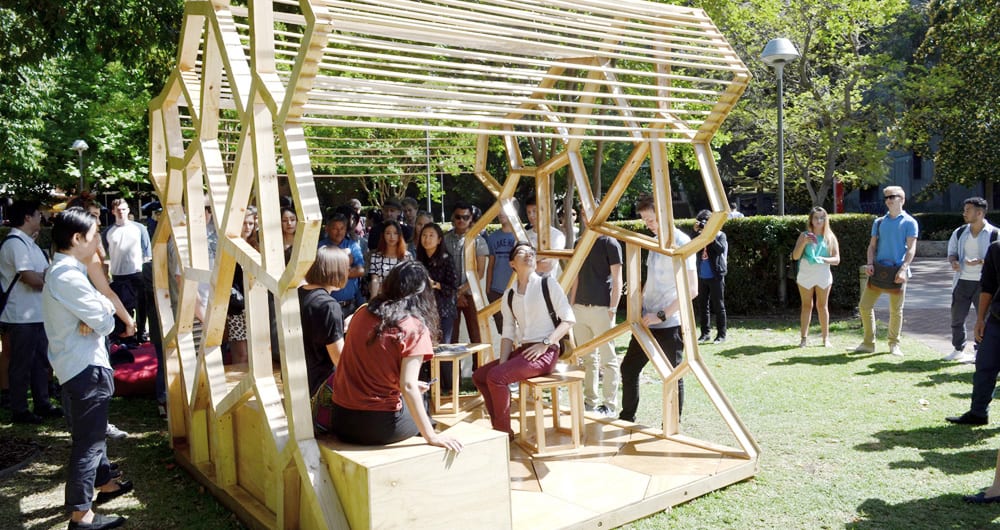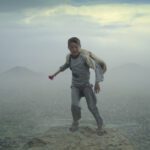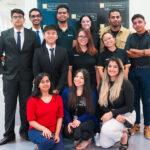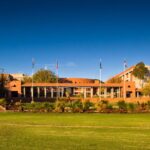If you’ve walked around Curtin University’s Bentley Campus recently you may have noticed the unique reading rooms, which have become popular lunch spots for many staff and students.
The impressive rooms were designed, built and funded by second year Curtin architecture students, and they represent the beginning of a wider spectrum of initiatives at Codelab, a research laboratory in the School of Built Environment.
Professor Sambit Datta says the project comprises research, ethical construction, digital technology and the design process, as well as engaging with the wider Curtin community.
“The objective was for students to try to build these prototypes and scale them up by sourcing their own materials and learning ways of using the materials, and using digital technology, including tools that we have in the workshop, to engage with the community,” he explains.
“It’s also about group work with peers, teachers and researchers. We were trying to get [the students] to extend their learning, to make something useful that they are proud of.”
Professor Datta says the students were challenged to build the structures with ethically sourced recycled materials, which abide by the school’s focus on environmentally friendly sustainable design.
“A large part of the brief was to understand means-oriented design, to use recycled things. To turn trash into value,” he says.
“We’ve had sponsors from local companies such as Little Creatures, to people donating pallets and even coffee houses giving up their coffee bean sacks. So there’s a whole range of the community who are part of the project.”
The reading room project is part of an initiative within the School of Architecture that focuses on integrating design research with teaching.
“We’re merging the researchers and PhD students with undergraduate students. It works because [the researchers} are very specialised in specific areas including design, computing, fabrication, modelling, so they pass on their knowledge,” says Professor Datta.
“The students are not only learning from us but from the research lab and their peers, so it’s a new way of learning, it’s a very transformative experience for them.
“We’ve got another project infourth year that’s similar. There are eight student-built ceilings around the architecture building. They are also quite dramatic,” he says.
The reading room project will be offered to students for the next three years. The school plans on developing the project yearly by introducing new challenges for students that will also benefit the campus.
“The next stage is using them as living laboratories; we want to find out how people use these spaces,” Professor Datta says.
“We’re hoping with smart sensors and visualisation in the HIVE, we could get more data so we could inform the planning and design of the Greater Curtin project, so our campus becomes more active and more effective.
“One of the critical things we’re going to do next year is get robotics and machine intelligence incorporated into means oriented design. We want to do things like take aluminium cans and unfold them, and turn them into building material,” he explains.
The reading rooms will be auctioned to interested bidders over the final week of November to recover the costs. The School of Built Environment will showcase the successful projects along with collections of student work in the end-of-year architecture exhibition in Building 201 and announce the winners of the auction on November 28.
Professor Datta says the school’s research-intensive style of design teaching has made a real impact on students, staff and researchers, and will only keep improving as similar research-focused projects are introduced into the curriculum.
“I think the students have had a very good experience. They have had a chance to interact with researchers, who are knowledgeable in particular areas, and their teachers,” he says.
“It’s a huge achievement and I think the students surprised all of us.”







